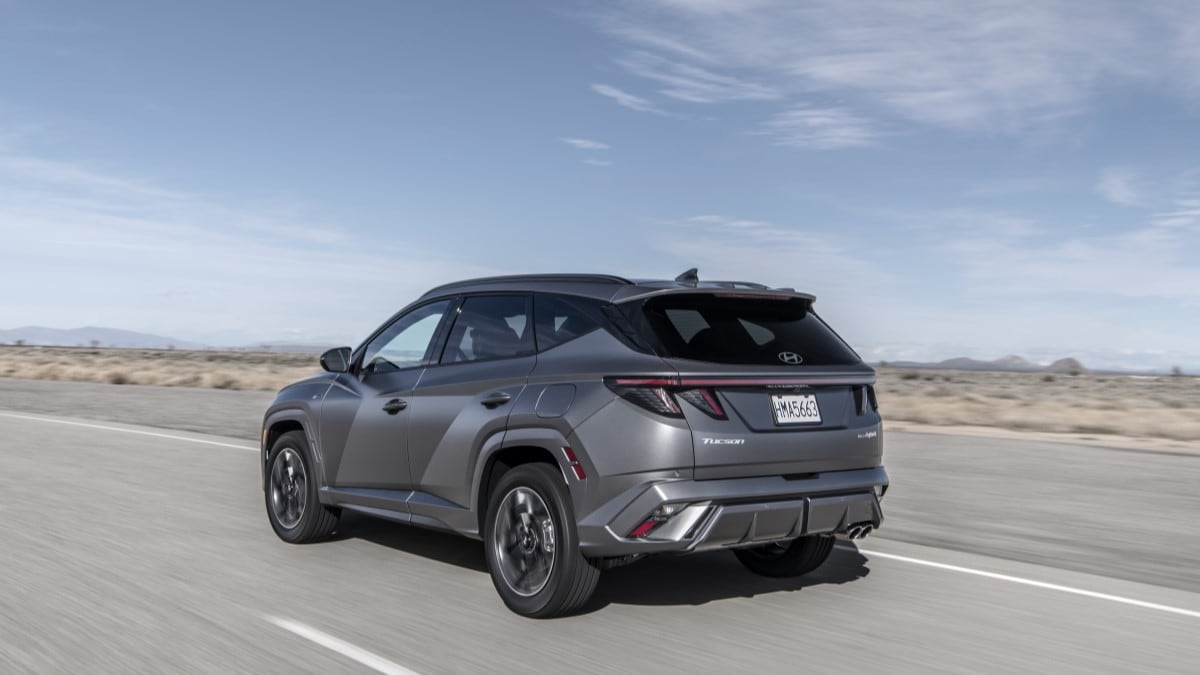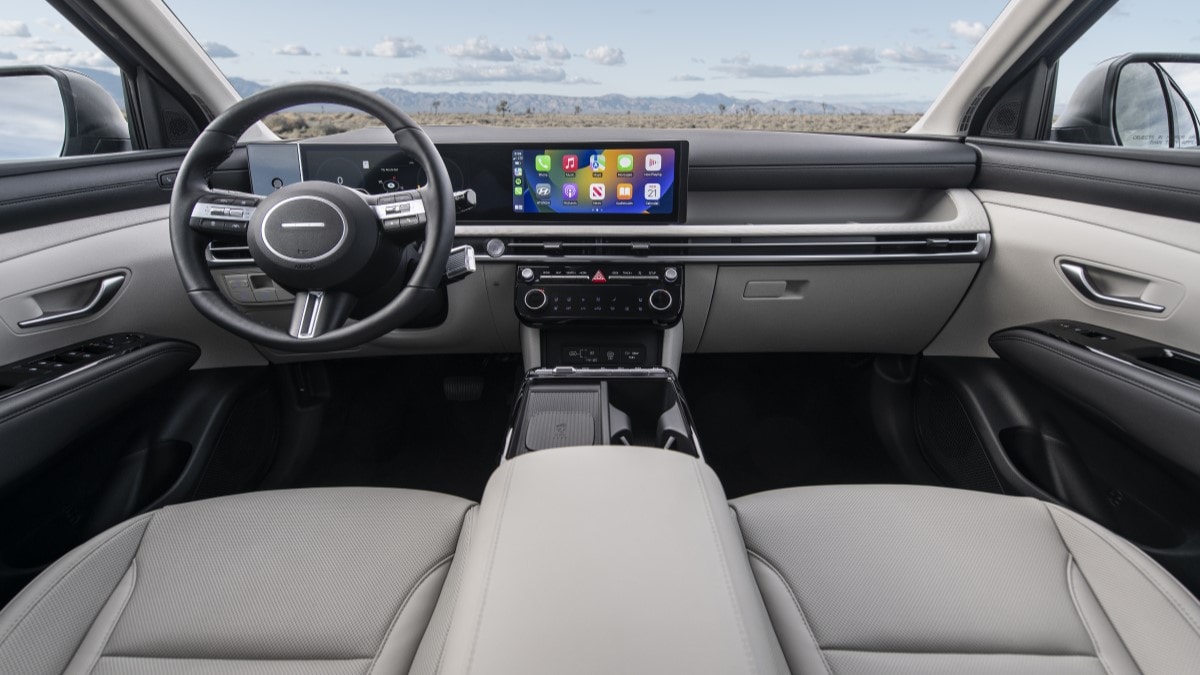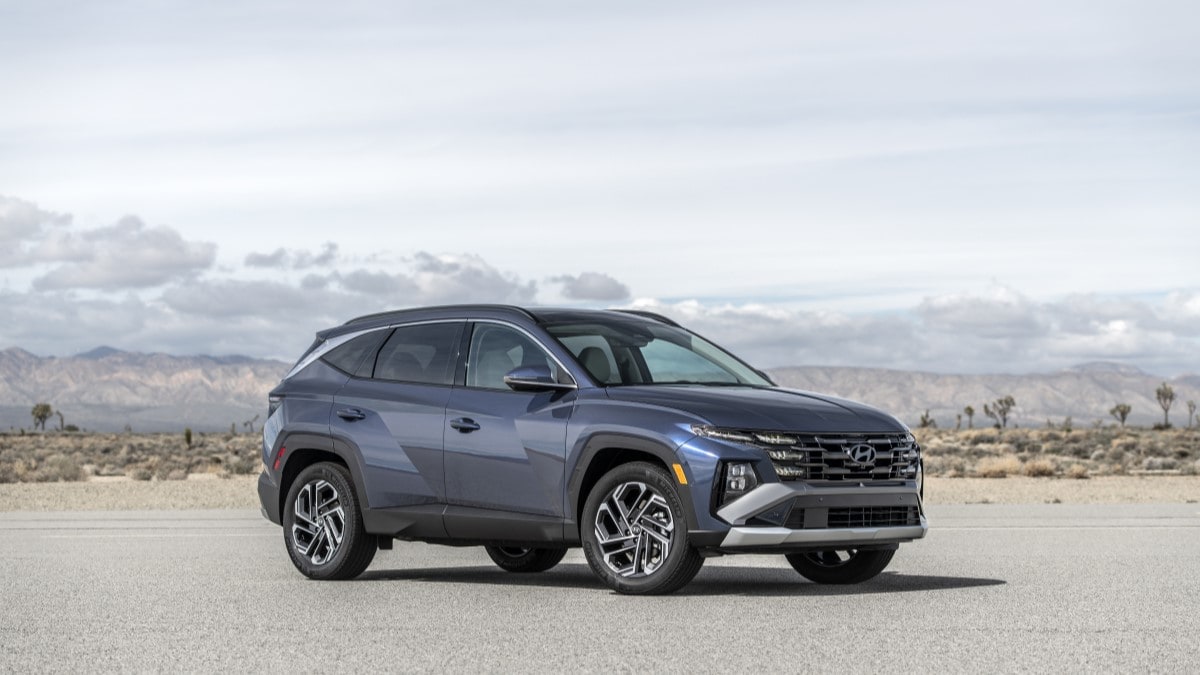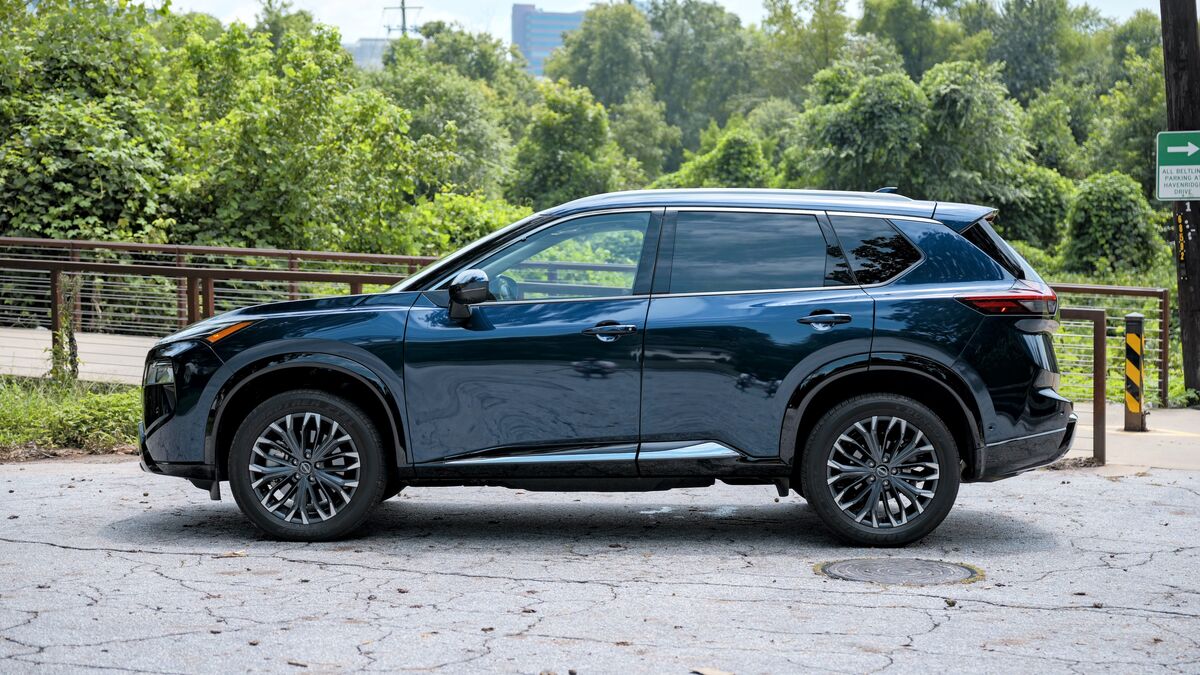The Tucson small SUV is Hyundai’s best-selling model and a versatile vehicle. But competition in the compact SUV segment is intense. Even small factors can keep a vehicle off the top of our best compact SUVs list.
The 2024 Tucson sits in a tie for sixth place but isn’t far from the best. Minor updates could make the 2025 version push toward the top of the list.

Trendy, Chunkier Look
For the next model year, Hyundai will give the Tucson a visual refresh. Changes include a boxier grille (almost every designer is making SUVs look more rugged for 2025) and new wheel designs. Hyundai still integrates the daytime running lights into the grille, but they’re larger, and there are fewer of them now. New front and rear bumpers add to the chunky look.
The XRT trim gets new, easier-to-use bridge-style roof rails.

Stylish Matching Screens, Wireless Connectivity, Baby Mode
Inside, an available 12.3-inch driver’s display screen and 12.3-inch central touchscreen sit in the same bezel, looking like one wide, curved display. It’s a look now common to midsize SUVs, but only now making its way into their less-expensive cousins.
After some driver pushback on automakers running everything through screens, Hyundai says, “A redesigned center stack includes the addition of supplementary knobs and switchgear for frequent-use driver controls including audio volume and tuning, along with select HVAC controls for greatly improved ergonomics.”
Hyundai has fixed a longtime complaint, making wireless Apple CarPlay and Android Auto standard on every trim level.
A potentially ingenious new feature is the Baby Mode in the 2025 Tucson. Hyundai explains that “within the new My Drive sub-menu, a driver-selectable Baby Mode helps reduce the sharpness of initial acceleration, smoothing out driver inputs for a gentler acceleration feeling for passengers. This more serene experience helps reduce potential disturbances that may upset infants or pets.”
Still Three Powertrain Options
There is one major difference in the cabin of upper trims. They now get a small, steering-column-mounted shifter, freeing up space in the center console.
Hyundai makes no mechanical changes for 2025, which means you can still get the Tucson as a gas-powered car, a hybrid, or a plug-in hybrid.
Hyundai hasn’t disclosed pricing for any of them. But with the changes essentially matters of styling, or of introducing technology Hyundai already builds for other cars, we don’t expect a large increase. The 2024 Tucson starts at $28,875, including destination fee. The 2025 model is slated to go on sale in June for the gasoline version, with hybrid and plug-in hybrid variants arriving in late summer.
The changes should make the Tucson more competitive than ever. There’s always a strong value argument for buying a Hyundai product, thanks to their impressive decade-long powertrain warranties. New styling and standard smartphone connectivity should only improve the Tucson’s position.







